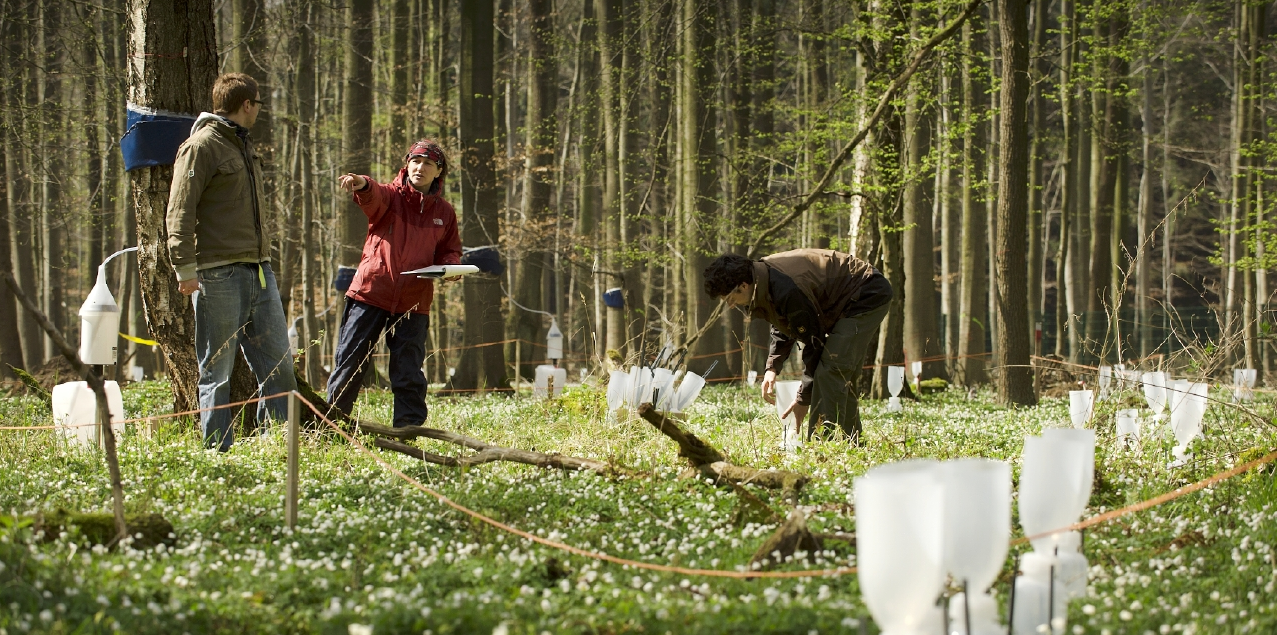
Process-based quantification of CO2 fluxes of differently structured forest ecosystems at different spatial scales - RespiScale
UFZ: Ecosystem-scale soil CO2 measurements and modelling of CO2 fluxes
Dr. Detlef Lazik
Dr. Gerrit de Rooij
Funded by: Forest Climate Fund, Fachagentur Nachwachsende Rohstoffe e.V. (FNR)
(Contract No. 2218WK57B4, Project period: 01.10.2021 - 30.09.2025)
Description
Forests may be able to capture the greenhouse gas CO2 from the atmosphere, thereby mitigating climate change. The degree to which an individual forest does so can be quantified by determining its carbon balance. One of the most important uncertainties thereby is the assessment of soil respiration at a spatial scale that is relevant for the respective forest ecosystem. This is largely due to the very heterogeneous soil structure and composition.
The project aims to improve the mechanistic description of the CO2 fluxes at areas of several square meters by further developing an innovative measurement technology to determine CO2 concentrations in the soil for larger areas than currently possible. Our CO2 sensor (called line-sensor) that works in the laboratory (Lazik et al., 2019; Sever and Lazik, 2019) will be set-up for the first time in the field near the forest observation site Kienhorst (Schorfheide, Brandenburg/Germany) together with our project partners of the Eberswalde Forestry Competence Centre (LFE).
The sensor consists of flexible tube that is permeable for gases. The difference between the CO2 concentration in the soil and that inside the sensor tube, which is flushed with air, leads to a pressure change of the confined air after the tube has been closed on both sides. This pressure change, compared with a reference measurement in another tube, allows the external CO2 concentration sought to be determined. By burying such line-sensors at various depths, we will be able to measure the vertical gradient in CO2 concentrations in soils for several years, averaged along the length of the line-sensor tubes.
These line-sensors will be installed in different depths in forest soils in three stands with different vegetation types. In addition to the large-scale CO2 measurements that will enable averaging of the CO2 concentration over several meters, point measurements will be made with conventional sensors for comparison, together with measurements of the soil water status, meteorological measurements, measurements of atmospheric CO2 concentrations, and measurements of tree growth.
The data will help determine soil respiration, thereby quantifying an elusive term in the carbon balance of a forest. In combination with carbon sequestration in the biomass this will help determine whether temperate forests can be sources or sinks of carbon, and quantify the amount of carbon they absorb from or release into the atmosphere.
References
Lazik, D., D. Vetterlein, S. Kilian Salas, P. Sood, B. Apelt, et al. 2019. New Sensor Technology for Field-Scale Quantification of Carbon Dioxide in Soil. Vadose Zone J. 18:190007. doi: 10.2136/vzj2019.01.0007.
Sever, M., and D. Lazik. 2019. New sensor measures biological activity in soil at field scale in real time. CSA News (doi:10.2134/csa2019.64.1003): 8–9.
